

Part I: Death of the Voyager
The Austrian
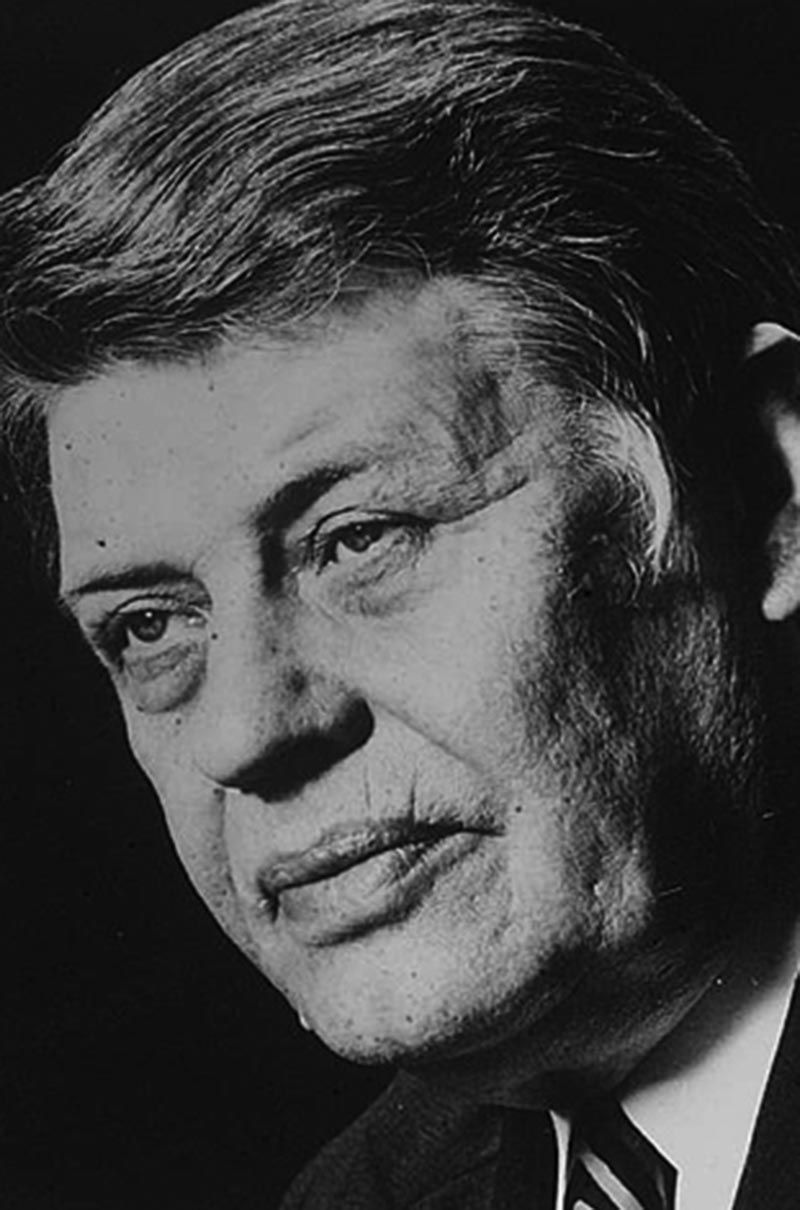
Hanns Martin Schleyer was a man that was, like many Europeans of the early to mid 20th century, split amongst the details of his time. He grew up in Nazi Europe as a product of the ultra-nationalism and hunger for power of the era. As a young man he was a member of the Hitler Youth organization, and at the age of eighteen became a member of the ultra-right wing Schutzstaffel, or SS. If he had been transplanted to a different country at birth, could he have grown up to be someone in the vein of financier David Rockefeller, himself born only one month after the young Schleyer, or philosopher Roland Barthes who was born just a few months later? It is interesting how the invisible lines that determine the fate of those born within them still, to this day, impact their future existence.
Schleyer, like Rockefeller, was born into a family preceded by it’s reputation. His great-great-uncle, Martin Schleyer invented what was hoped to be a universal language, Volapük, around the same time as the international auxiliary language that would eventually supersede it, Esperanto. Created with the intention of unifying the languages of humanity one hundred years after the ending of the Age of Enlightenment, Volapük, as envisioned by the elder Schleyer, would promote an air of understanding amongst all of the variety of people throughout the planet Earth. It could have, in theory, made the world smaller by allowing the spread of knowledge to become more fluid. Unfortunately Schleyer, as proprietor of the language, was unwilling to allow anyone but himself to dictate the specifics of it and this, in turn, decreased its development.
It is a noble idea, the search for some kind of universality or common thread within humanity, that pushes a man to believe that he can alter history and human physiological development so greatly as to bring about a new language for all of the human beings of the world to share. However, it is one of the great fallacies of humankind to narrow down a grouping of living creatures for the benefit of better understanding their place within the larger context of existence. This is simply because no matter how many qualities two individuals share, whether they be two children growing up side by side in any major metropolis of the world, or two gray wolves birthed within seconds of each other in the wilderness America, there are always qualities present that separate the individual from the overall whole. It is these differences, the over-arching presence of individuality within humankind, that creates a unification of our species.
To the young Schleyer, and his quest for power, this logic was of little interest. A humanitarian, or champion of the human experience, Hanns Martin Schleyer was certainly not. He was instead a man that was out for himself, a capitalist with the utmost concern for everything that promoted his own well being. Unfortunately, this was the premise for his kidnapping, and subsequent murder, on September 5th 1977, by the Marxist German guerrilla group, the Red Army Faction. At least it was the premise propagated onto the divided world for the reason of his untimely demise.
Diagram: American made V-2
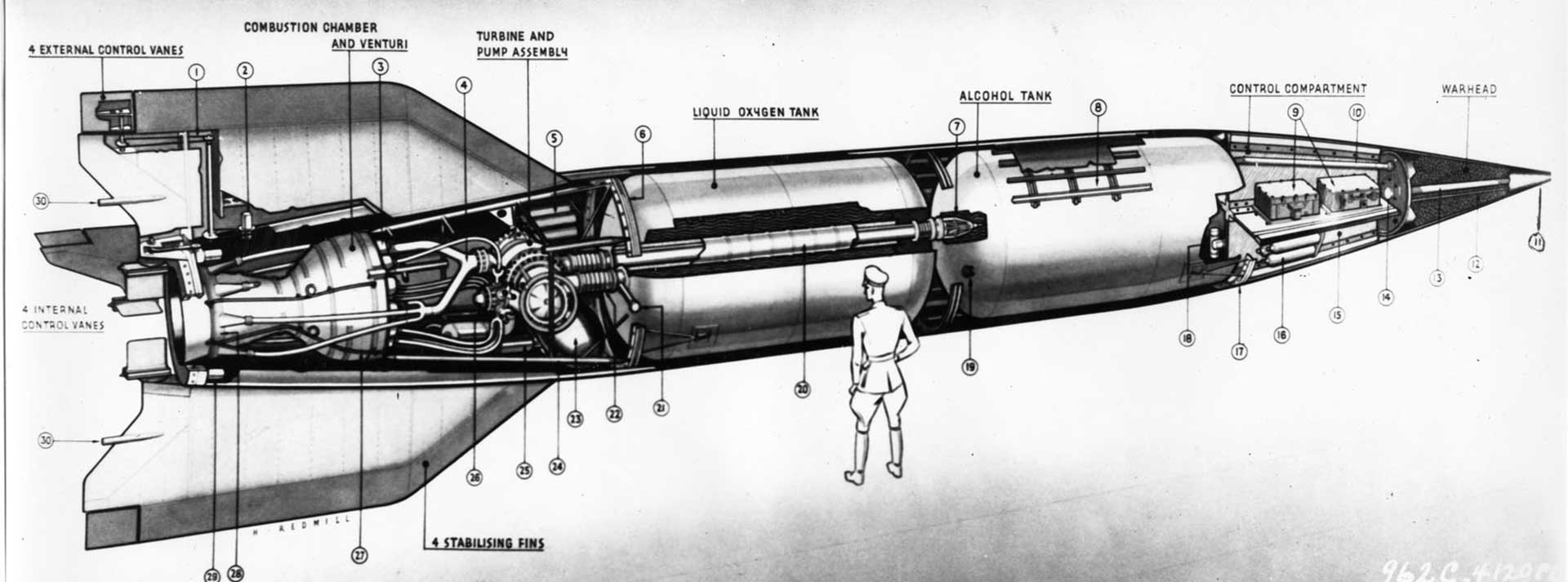
Diagram: American made V-2
DAIMLER AND THE NAZIS

Digging further into Mr. Schleyer’s past uncovers more of the story surrounding his termination. A politician above all, he was ultimately done in by this preoccupation. In 1951, Schleyer joined the Daimler-Benz corporation of post war West Germany. A company that participated greatly in the horrors of the second world war, the automotive giant was responsible, in part, for the advancement of wartime technology that ultimately resulted in the reason why loss of human life was experienced on such a grand scale during the course of this global engagement. The killing of human beings, thanks to Daimler-Benz and similar companies on multiple continents, had become mechanized, institutionalized, and thus more de-humanized in the process. During this war, the human emotion involved with taking another life became even further removed from the horrible act.
While Daimler might not have been involved in developing the instruments of genocide such as the gas chambers of Auschwitz or Dachau, they were key developers of the aircraft engines used to bomb cities all over Europe. They were also major manufacturers of barrels for the Mauser rifle, the standard issue firearm for the majority of the German army during the war. Furthermore, slave labor was employed by the corporation, not unlike a large number of companies and government entities on each side, in order to meet their wartime quotas.
Mittelbrau-Dora Concentration Camp, 1945
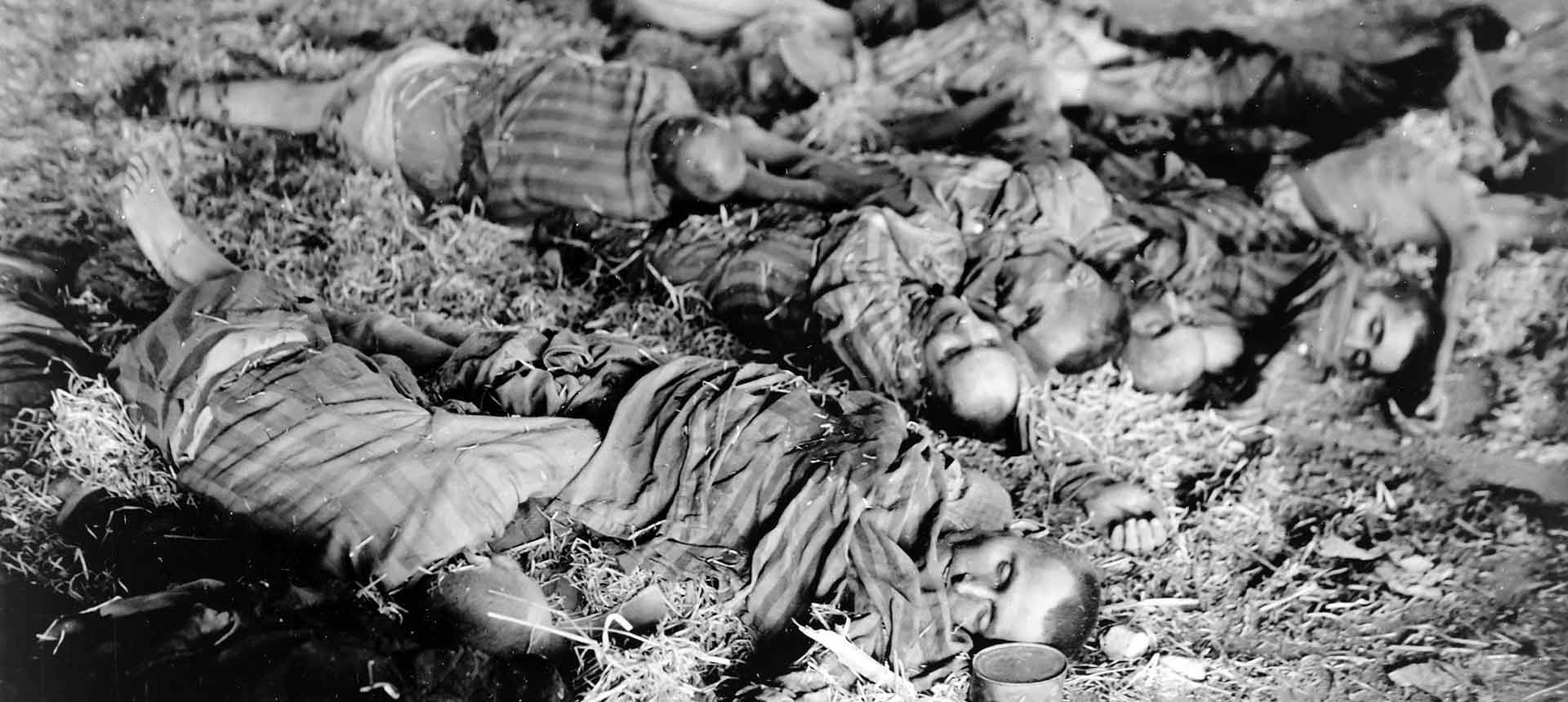
Mittelbrau-Dora Concentration Camp, 1945
THE GREAT RACE
The irony of these technological advancements was that they were simultaneous to the beginnings of one of the greatest developments of our collective human history. The rockets that were built to send payloads of explosives raining down on the helpless citizens of London were engineered by the same Nazi scientists who would eventually be instrumental in the early American-Soviet space race; a race that eventually resulted in human beings gaining the ability to reach the outermost edges of our solar system.
Unlike the wars of human history, there was no tangible outcome of the race for space that was predicted to yield any kind of definite reward. The expectations to find some incredible riches in outer-space were never a driving factor in its exploration the way that it had been with past conquests. There was no gold to be found or civilizations to be enslaved or conquered, and it was a turning point in human history because of this reason. This endeavor was a quest to conquer the unknown for the sake of understanding it; albeit with a driving motivation to do it before the other guy. Nonetheless, within the history of human exploration, it was noble in comparison.
However, it was this unfortunate catch-22, a world war that spawned incredible technological advancements for the betterment as well as the detriment of humanity, that Mr. Schleyer was deeply involved in, and what would, thirty-two years after the supposed end to the war, result in his death. And it was in the divided land of Germany, cut neatly in two like a gingerbread house, that the two great behemoths of the time, conveniently delineated by geography as east and west, would kill this man.
Operation Paper-clip
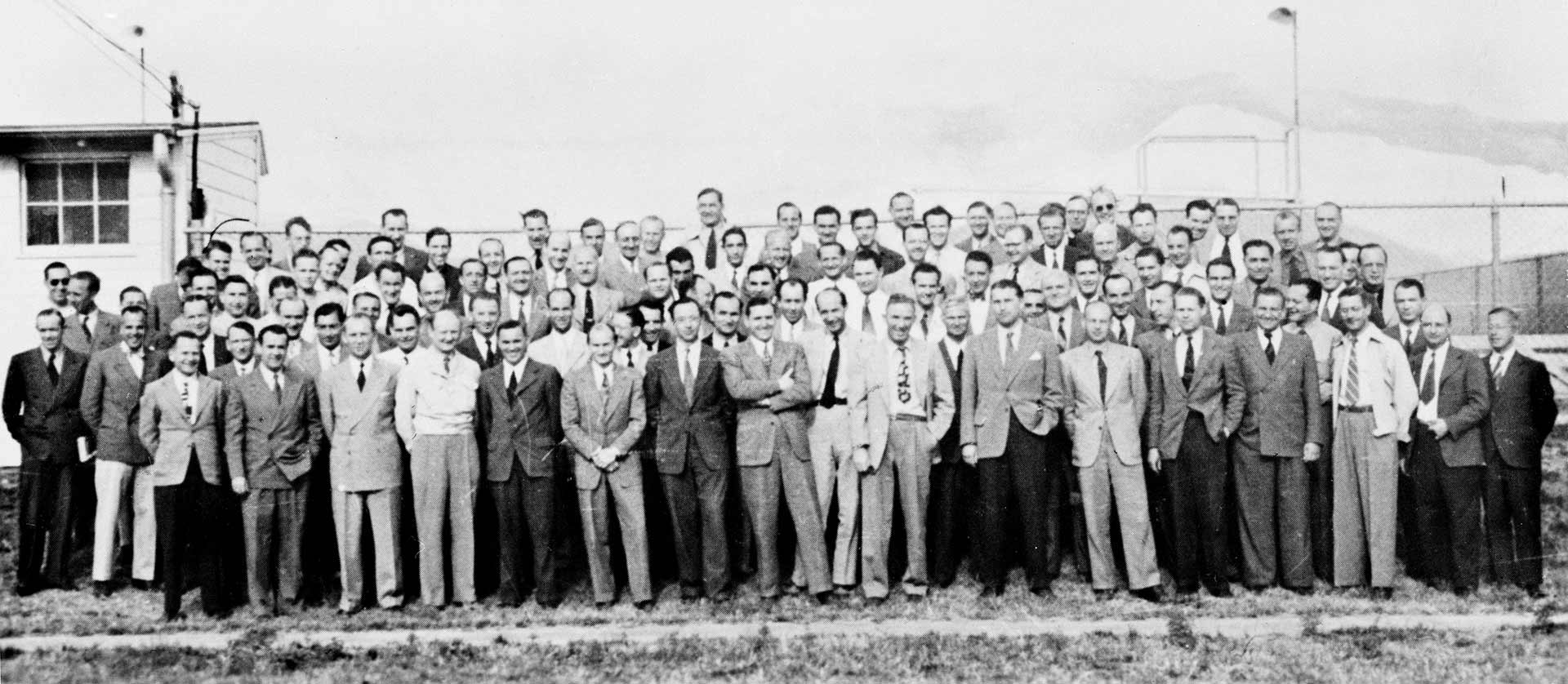
Operation Paper-clip
OSENBERG
Operation Paper-clip was a secret US government initiative on the part of the Office of Strategic Services (OSS), an organization that would eventually morph into the CIA, to recruit Nazi scientists for employment on various American projects at the end of World War II. It was in direct competition with every other victorious nation at the war’s end as well as their own ambitions to utilize the fruits of the Nazi war machine.
Prior to this enterprise, a group of names was compiled known as the Osenberg list. This was an index compiled by the Nazi government of intellectuals and scientists previously sent to the war fronts in the role of combat soldiers. Upon the failed Soviet conquest of Operation Barbarossa, the Nazi push to conquer the frigid motherland, the Osenberg list was drafted in order to find the scientists, engineers, and technicians required for the creation of a defense system that would become integral to what officials envisioned as a prolonged war with the east. One of the main compilers of the list was our young Untersturmführer on the western front: Hanns Martin Schleyer.
During this time, Schleyer was a major player within the industrial associations of Bohemia and Moravia, one of the key regions of the Nazi regime’s military industrial complex. Through his various appointments within the regime, Schleyer was able to meet some of the leaders of the Nazi scientific community. Werner Von Braun and Arthur Rudolph, two individuals that later became key innovators of the Saturn V rocket booster used to put the Apollo 11 astronauts on the moon, were both introduced to Schleyer during this time and later added to his clandestine Osenberg list.
One of the most enduring developments of Operation Paper-clip, and the Osenberg List, was a strategy that would eventually have a major impact on the future of American intelligence gathering. It was the practice of re-writing the personal histories required to circumvent US president Harry Truman’s stipulation that any scientist recruited by the operation be free of previous Nazi ties. Seeing as this would exclude nearly all of the scientists, the OSS set about on a mission to create falsified biographies for not only the individuals on the list, but the players that were instrumental in creating the list, including Hanns Martin Schleyer. The alterations of historical information on the part of the US government in post-war Europe set a precedent for every future generation about the validity of truth. They morphed the concept of truth into a veil with the ability to be pushed forward or backward as the need arose.
Red Army Faction
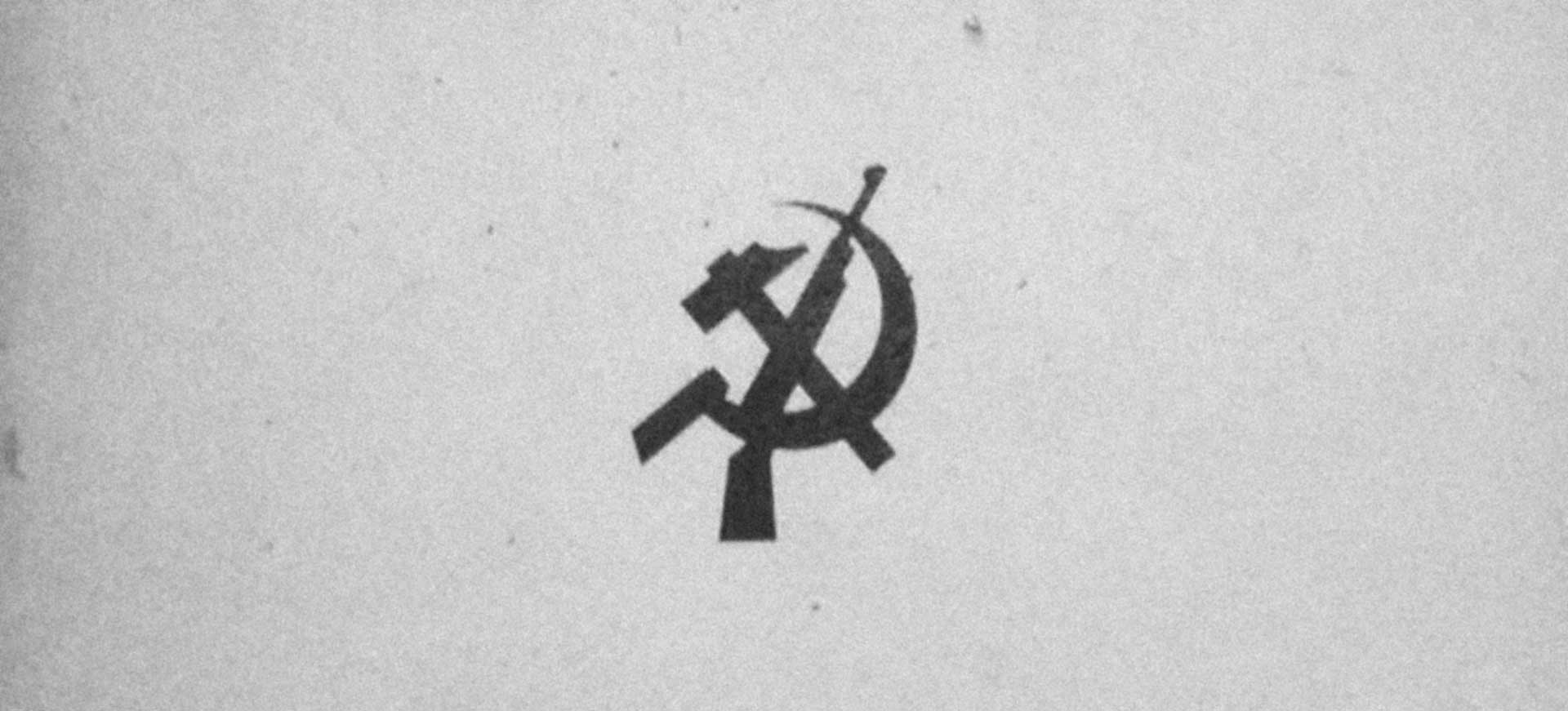
Red Army Faction
DEATH OF THE AUSTRIAN
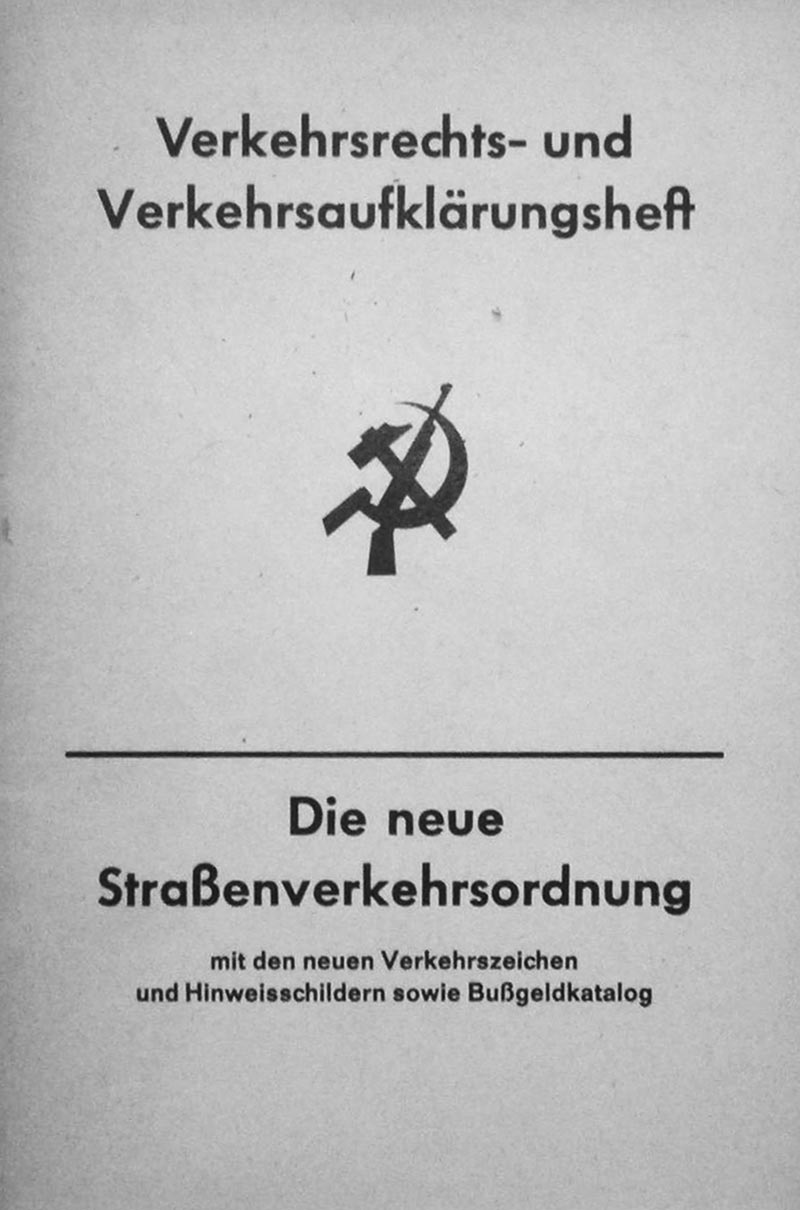
October 18, 1977, on a lonely stretch of French highway, rue Charles Péguy, inside the trunk of a green Audi 100, the recently deceased body of Hanns Martin Schleyer was found terminated by a single gunshot to the front of the face. Investigators on the scene described the act as a sort of professional revenge; clearly orchestrated by the motive of embarrassment; an obvious warning.
September 5, 1977, a little more than one month prior to Mr. Schleyer’s death, on a quiet suburban street of Cologne, Germany, the industrialist’s black Mercedes was stopped suddenly by his driver, Heinz Marcisz, when a baby carriage darted suddenly out in front of the car. Stopping only inches from the frail black carriage, the rear of Schleyer’s automobile was not so lucky. Trailing behind the former SS Lieutenant’s car, a second vehicle containing two police escorts, Reinhold Brändle and Helmut Ulme, smashed forcefully into the back of Schleyer’s Mercedes surprising everyone involved.
In front of the car, from the baby carriage that instigated the event, female RAF member Sieglinde Hofmann pulled a machine gun and opened fired on Schleyer’s driver. At that moment, from four other positions surrounding the car, masked and heavily armed RAF members emerged from their hiding places and also opened fire on the two vehicles. Within seconds of the assault beginning, three police escorts and Mr. Schleyer’s driver were dead from the gunshot wounds that peppered their bodies. Mr. Schleyer, unharmed by the volley of lead, was ripped from the vehicle and thrown into the backseat of a waiting late model Opel Admiral. Whisked down the street and into anonymity, the entire event lasted less than a minute.
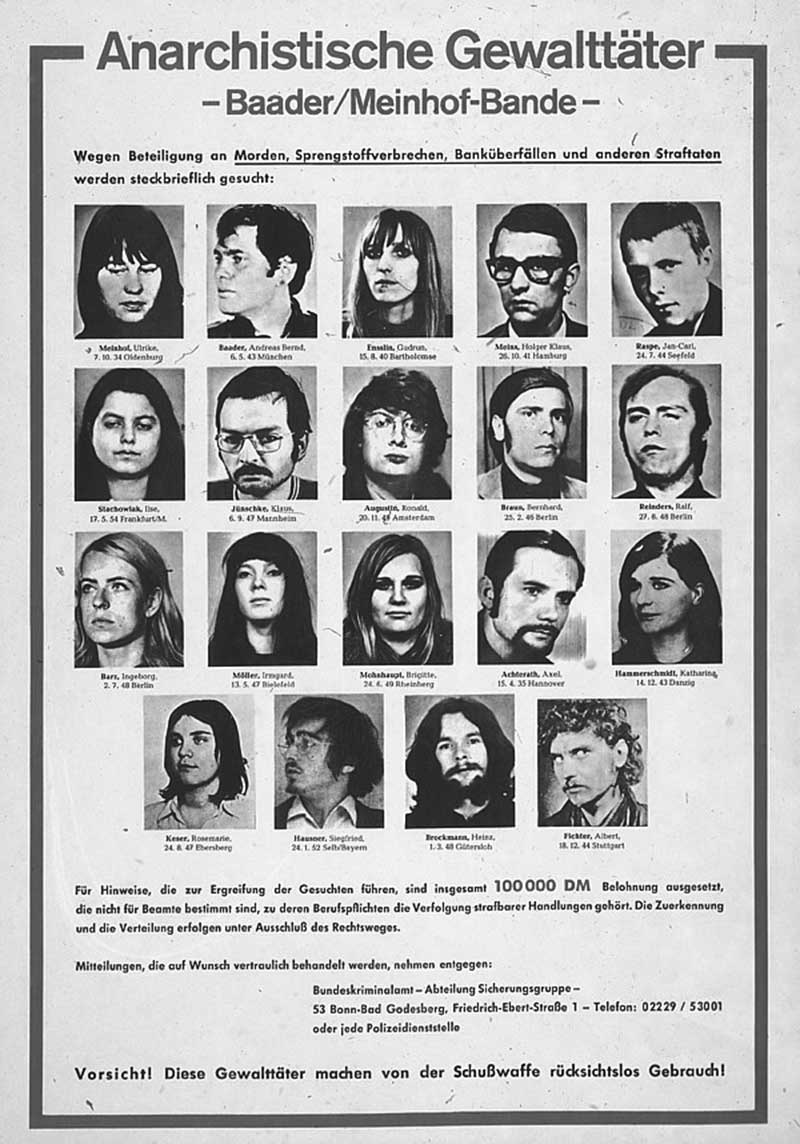
Years later, upon the dissolution of the Soviet Empire, detailed record keeping of the Stasi (East Germany’s secret police force) helped to fill in the details of why Mr. Schleyer’s murder took place. It was, like the majority of clandestine terrorist operations, funded and assisted by a much larger entity. In this case, the stagnant leader of the Soviet Union, Leonid Brezhnev personally ordered the elimination of the man that contributed so greatly to the future US space program. It is, in hindsight, obvious that the kidnapping of Mr. Schleyer on the date September 5th, 1977 was intentionally planned to coincide with a momentous event some 4,500 miles away, in Cape Canaveral, FL.
